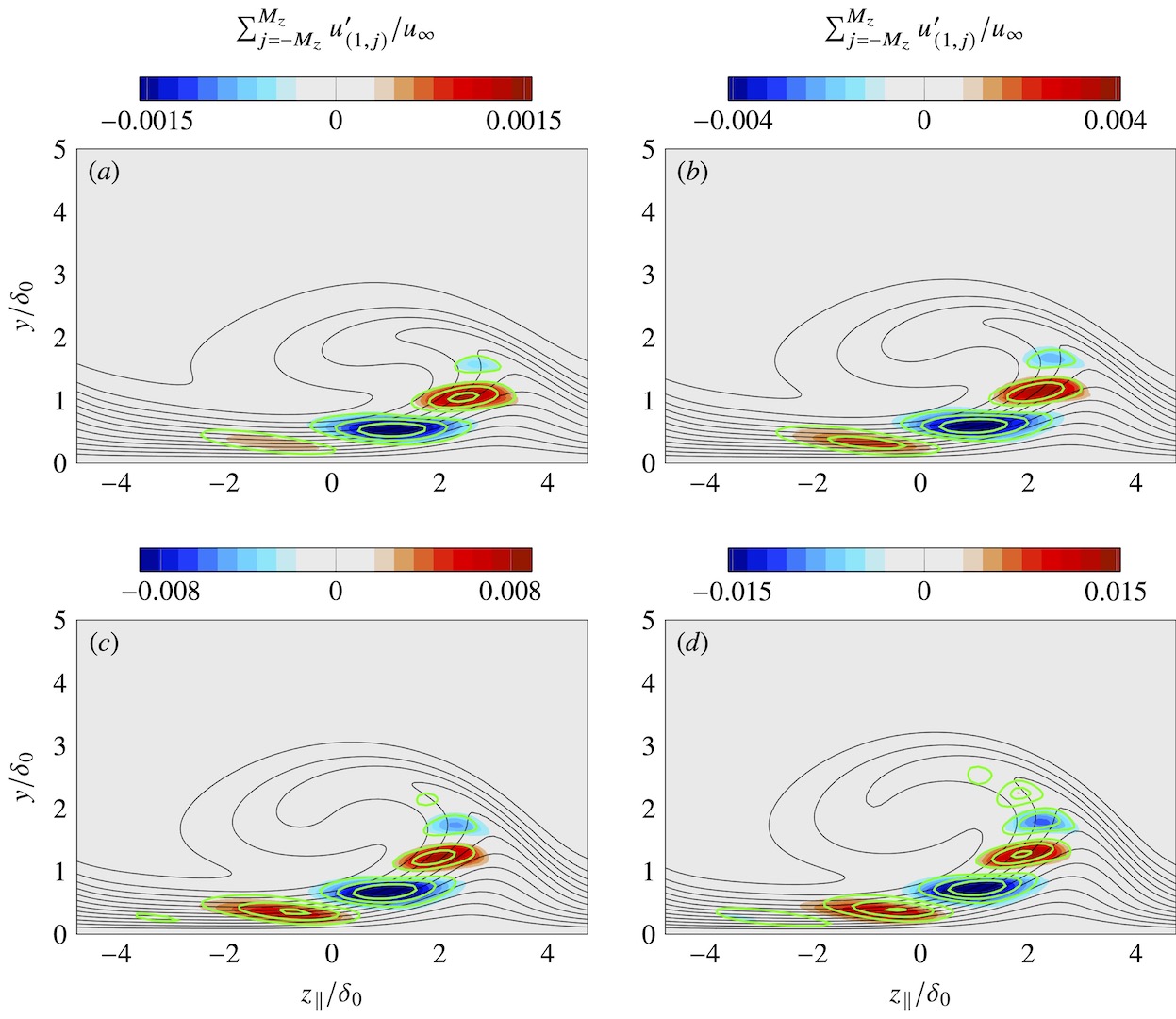J. Casacuberta, K.J. Groot, S. Hickel, M. Kotsonis (2022)
SciTech Forum and Exposition, San Diego. AIAA paper 2022-2330, doi: 10.2514/6.2022-2330
The evolution of secondary instabilities in a three-dimensional stationary-crossflow-dominated boundary layer is investigated by means of Direct Numerical Simulations (DNS) and linear spanwise BiGlobal stability analysis. Single-frequency unsteady disturbances and a critical stationary crossflow mode are considered.
Unsteady perturbation content at 1 kHz manifests in the form of the type-III instability mechanism in the lower portion of the boundary layer in both the DNS and the stability approach. Considering disturbances at 6 kHz, the results from the stability analysis reveal the existence of largely amplified type-I and type-II secondary instability mechanisms. Strong growth displayed by the former is measured in the DNS, which potentially overshadows manifestations of the type-II mechanism.
Laminar-turbulent transition primarily induced by the growth of type-I disturbances is captured in the 6 kHz case. Overall, we report good agreement between DNS and stability analysis in terms of perturbation organization and growth rate for all cases studied.


